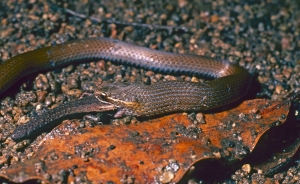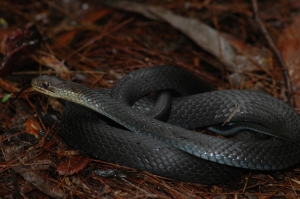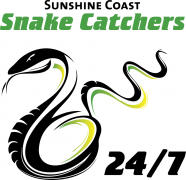MARSH SNAKE
Significance to Humans:
Bites from this species have been known to cause severe local symptoms such as pain & swelling, with more general reactions such as headaches and nausea also recorded. All bites should still be treated immediately and attended to with correct first aid.
General description:
Fairly uniform brown, olive or black above with dark grey or black belly surface. Two prominent narrow pale-yellowish stripes on each side of face, one running from snout, through eye and onto neck area, & one below eye running from snout to corner of mouth. In juveniles the head is often darker than the body. Scales smooth. Midbody scales at 17 rows.
Average Length:
50cm with occasional specimens nearing 70cm.
Habitat in SE Qld:
Rainforest & moist well-vegetated areas such as wet sclerophyll forest, margins of creeks, dams, wetlands & low-lying seasonally flooded areas.
General habits:
Diurnal, although may also be active at night in hot weather. Shelters under rocks, sheets of bark and thick debris.
Diet:
Small frogs and lizards.
Local distribution:
Found in wetter suburbs usually with riparian (river margin) habitats nearby such as Bells Park, Doonan, Tewantin and around Lake Cootharaba.
Around the home:
May be found in damp or moist gardens under timber, sheets of iron & foraging amongst thick vegetation.
MILDLY-VENOMOUS
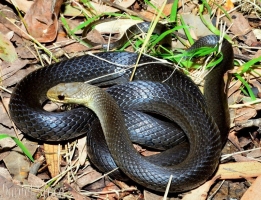
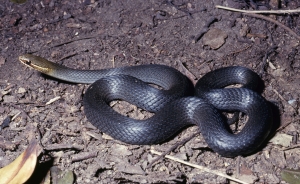
Click on Image to Enlarge
